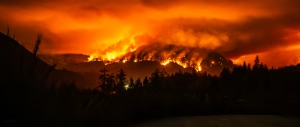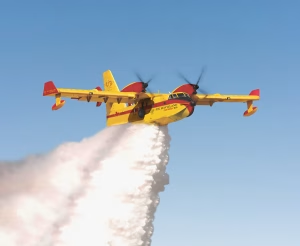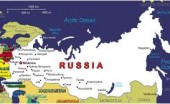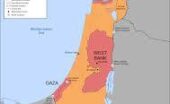Johannah Bernstein post: "eternally proud of my father’s extraordinary aeronautical engineering. legacy. here is a photo of the Canadair Water…
Water bombers and wildfires
Written by Diana Thebaud Nicholson // September 11, 2025 // Aviation & Aerospace, Canada, Natural Disasters // 1 Comment
 Canada doesn’t have a national firefighting agency. This fall is decision time on whether to build one
Canada doesn’t have a national firefighting agency. This fall is decision time on whether to build one
The Federation of Canadian Municipalities has called on the federal government to consider “acquiring a sufficient national fleet of Canadian-made water bombers,” with strategically located home bases in rural communities. Politicians including Mr. Moe and Ontario Premier Doug Ford also raised the idea this year of a shared fleet of water bombers.
(Globe & Mail) … [Emergency Management Minister Eleanor] Olszewski acknowledged that some provinces have more robust wildfire response capabilities than others, and said the idea is under consideration.
If the record-breaking fire season of 2023 was a wake-up call for how a warming climate is turning Canada into a tinderbox, this is the year that the country has been forced to come to grips with a new, pressing question: How will we be able to continue fighting fires and protecting communities inside a patchwork system that has been pushed to its limits?
The debate centres on whether the country’s combination of provincial, territorial and federal resources will be enough to meet future needs. Longstanding calls for a national wildfire strategy have taken on new urgency, and now Ottawa is formally examining the options, with a decision expected late this fall.
The Globe and Mail spoke with experts in wildfire management across the country to better understand the ideas being put forth. The broad range of recommendations reflects the complexity of planning for a rapidly changing wildfire landscape while addressing differing opinions on where the problems lie.
While some say that existing agencies know their turf best but must be better resourced, there is also a growing consensus that the frequency of large, multi-jurisdictional fires demands a national response led by a single federal agency with shared firefighting resources.
Under the current system, provinces and territories are primarily responsible for their own wildfire management.
When a jurisdiction requires additional assistance, the Canadian Interagency Forest Fire Centre co-ordinates resource sharing within Canada and internationally, managing requests for personnel, equipment, aircraft, information and expertise.
The federal government, through the Government Operations Centre, co-ordinates further support, such as deploying the military to assist with evacuations or to move equipment.
While this system functioned well for decades, there is now a seasonal debate about about why it is no longer sufficient and whether a federal agency is needed.
a surge in demand for the aircraft have (sic) led to huge backlogs. Manitoba Premier Wab Kinew said in April that his province had put down an $80-million deposit on three water bombers to replace three older aircraft but that they won’t be ready until the 2031 and 2032 wildfire seasons. – 23 August
11 September
Sask. government paid $100M too much for new firefighting planes, B.C.-based manufacturer says
Coulson Aircrane asks court to overturn $187M contract, alleging tendering process was flawed, biased
(CBC) Coulson, one of the leading companies in the world for retrofitting planes for firefighting, made the claim last month in an application to the Court of King’s Bench.
“We are concerned the government of Saskatchewan has awarded a very large (over $187,000,000) contract for forest fire airplanes, without affording any reasonable opportunity to Coulson or any other competitor to bid on the contract,” says an affidavit filed by company president Britt Coulson.
In February, cabinet approved the purchase of four Q400 planes, retrofitted for firefighting purposes, from B.C.-based Conair Group, Coulson’s chief competitor, for $187,042,000 payable in increments over the next four years. Conair delivered the first plane this summer.
Earlier this year, the Saskatchewan government was being widely criticized during the spring’s forest fire crisis because several planes in its fleet were out of service, some because of a lack of parts. The province says the new planes will help Saskatchewan tackle future crises more effectively.
16 June
Sask. government defends grounded water bomber as criticism mounts over wildfire response
Province says aircraft was not used because of a lack of a training due to wildfire crisis
18 August
Wildfires rage in Spain and Portugal amid searing heat
(The Guardian) Relentless heat and raging wildfires continue to ravage southern Europe, with one-quarter of weather stations in Spain recording 40C temperatures, as the prime minister urged people to “leave the climate emergency outside of partisan struggles”.
Data from last week shows the blazes have burned at least 530,000 hectares this year, more than double the average over the past two decades, forcing several overwhelmed governments from Spain to Bulgaria to seek firefighting help from the EU. Portugal activated the EU’s civil protection mechanism on Friday with a request for four Canadair water-bombing planes.
14 August
2025 on track to beat UK record for wildfires, warn firefighters
Professional body says firefighters ‘pushed to brink’ by climate crisis-fuelled blazes, as wildfire in North Yorkshire continues to burn
Democrats demand answers on cuts to firefighters during critical fire season
House Democrat Robert Garcia presses USDA head Brooke Rollins on how administration is protecting Americans
11 August
Ontario water bombers dispatched to help fight wildfires in Newfoundland and Labrador
Newfoundland and Labrador Premier John Hogan says two water bombers from Ontario are expected to help with his province’s battle against a string of stubborn wildfires.
As of Monday, there were four wildfires burning out of control in the province – two in eastern Newfoundland and two in Labrador.
8 August
Deploy the Super Scoopers!
If Canada rerouted some fighter jet funding to churning out squadrons of water bombers, this country could contribute substantially to the global war against wildfires
Ken Steacy
(Globe & Mail) Parts of Canada are burning, and wildfires are having a devastating impact on our forests and communities, causing carbon emissions to spike globally. But we’re uniquely positioned to mitigate this situation with the most powerful tool in the fire-fighting arsenal: water bombers!
A quick historical perspective: during the second world war, the A.V. Roe factory in Malton, Ontario turned out Lancaster heavy bombers at the astonishing rate of one per day. They contributed mightily to ending the war in Europe, and post-war were converted to Search-and-Rescue roles
By the late ‘40s the same facility produced an aircraft that nearly had the distinction of being the very first commercial jet-powered passenger plane: the Avro Jetliner. Sadly, the Korean war refocused production on fighter planes, and Avro built CF-100 Canucks instead.
In the late ‘50s, Avro launched what was widely regarded as the greatest high altitude supersonic interceptor of its time, the legendary Arrow. My dad was an RCAF pilot and would’ve flown that magnificent aircraft, had it not been sacrificed on the altar of fiscal and political expediency – but don’t get me started!
Today, geopolitical wrangling now pits the Yankees’ lockheedmartin F-35 lightning ii against a viable contender from our NATO ally in Sweden, the Saab j-39 Gripen, as replacements for our aging hornets. Both are very expensive warplanes, some of whose cost might be better allocated elsewhere.
We are indeed at war with a relentless, fiery enemy whose greatest nemesis is an extraordinary aircraft designed and built right here in Canada: the Canadair CL-415. Nicknamed the Super Scooper, this dedicated water-bomber has proven its worth for decades now, across the country and overseas as well.
This remarkable amphibious plane can repeatedly scoop and drop a 6,000 litre load in less than 10 minutes, depending on the water’s proximity. Its enormously powerful engines and high-lift wing make it very manoeuvrable, therefore ideally suited to the extremely dangerous mission profile.
The threat of wildfires is real and growing, causing massive economic chaos across the country and worldwide. The solution is obvious: deploy squadrons of Canadian-made water-bombers!
We have a proven aircraft, the raw materials and facilities to build them, and the highly-skilled pilots and ground-crew (currently serving in the RCAF) to fly and maintain them. all that’s now needed is the political will to crank them out at the same rate as those Lancasters during a very different war!
Fire chiefs call for Ottawa to move forward with national agency to fight forest fires
‘We just need it to start,’ says president of Canadian Association of Fire Chiefs
(CBC) The Canadian government has been studying the possibility of creating a national disaster response or co-ordination agency ever since the record-breaking forest fire season in the summer of 2023.
The Canadian Association of Fire Chiefs (ACCP) says it’s time for Ottawa to stop studying the idea of a national forest fire co-ordination agency and take action.
The organization’s president wants the federal government to take inspiration from the U.S. Fire Administration to establish a similar office in Canada.
The U.S. office is part of Federal Emergency Management Agency, or FEMA, but Ken McMullen said a Canadian version could be simpler and less costly.
The Department of Public Safety told The Canadian Press that [Emergency Management Minister Eleanor] Olszewski “will work closely with her cabinet colleagues to explore and advance options to improve co-ordination and response capacity at the federal level.”
Over the past two years, Ottawa has studied various models that exist around the world and met with emergency management experts, the department added.
“These preliminary discussions have revealed that any solution must reflect the realities of the Canadian federation, including the leadership of provinces, territories, local communities, and Indigenous governments in emergency management,” the statement said.
25 July
Ford acknowledges water bomber pilot shortage, launches request for national fire plan
Premier Doug Ford has acknowledged that his province has a shortage of pilots trained in the difficult task of flying water bombers over forest fires, as blazes continue to rage across northern Ontario.
(Global news) Earlier in the season, the union representing front-line firefighters said planes in the province were grounded because Ontario didn’t have enough pilots to fly the water bombers it currently owns.
The Ford government has said it is ordering new water bombers, but the premier complained they take up to four years to build.
Ford, as the chair of the Council of the Federation, is leading a push from the country’s premiers to have the federal government take on a bigger role in fighting fires.
23 July
Shipbuilding, aerospace to be priorities in federal strategy to transform defence sector, Joly says
Federal Industry Minister Mélanie Joly says aerospace and shipbuilding are areas where Canada can excel as the government prepares its Defence Industrial Strategy, which aims to transform the country’s status as a laggard to a leader in the sector. … Through military investment, Ms. Joly said she’d like to see Canada’s aerospace sector rebuilt into something that resembles former versions of itself – such as in the 1950s, when the country was known for its Avro Arrow program.
2 July
 Canadian-built waterbomber gets upgrade for global wildfire fight
Canadian-built waterbomber gets upgrade for global wildfire fight
Jeffrey Jones, ESG and Sustainable Finance Reporter
(Globe & Mail) With wildfires wreaking more devastation around the world each year, Canada has what other countries want: an aircraft that keeps proving itself in the battle against damage, dislocation and chaos.
De Havilland Aircraft of Canada Ltd.’s twin-engine firefighter planes are renowned for their manoeuvrability, and for expertly skimming along bodies of water to fill up with large volumes to dump on infernos – and do it repeatedly.
This spring and summer, as out-of-control fires have scorched vast tracts of forest in British Columbia, Alberta, Saskatchewan and Manitoba, and forced thousands of people to flee their homes, the aircraft known as the CL-215 and CL-415 were hard at work again in the most dangerous conditions. Some of these workhorses are decades old and De Havilland Canada is modernizing them with new turbine engines and other gear.
The company is also assembling the next generation of firefighting aircraft, starting with an order of 22 planes that are headed for Europe, which like Canada is struggling with a growing wildfire scourge.
The Canadair 515 is the first new model of the waterbomber to go into production since 2016. Since then, B.C.-based Longview Aviation Capital has acquired the storied De Havilland Canada brand from Bombardier Inc. The company, which built its first aircraft in 1928, is also known for the Twin Otter and Dash 8-400 turboprop planes. [not sure this is accurate]
De Havilland is producing the 515 in stages in Victoria and Calgary with parts from across the country. It is designed with an upgraded flight deck kitted out with the latest in avionics, aimed at bolstering safety and reliability in the harsh conditions in which the company’s planes already excel. The waterbomber is also built with improved materials, including advanced composites and polymers, and corrosion protection. First deliveries are scheduled for 2028.
On a recent tour of one of the company’s facilities in northeast Calgary, about 15 engineers and technicians were hard at work retrofitting a CL-215 to the latest standards – including switching out piston engines for turbine ones.
The existing De Havilland waterbomber aircraft remain crucial to firefighting fleets around the world. Six Canadian provinces operate them. Quebec sent two CL-415s to battle the Los Angeles fires last year.
Europe’s heat wave, wildfires leave multiple dead as temperatures soar
8 June
Carney lays out Canada’s G7 summit priorities
PM pushing for agreements and action on peace, energy security and new partnerships
(CBC) …Carney said Canada will “seek agreements and co-ordinated action” on three core missions.
The first is protecting Canadian communities and the world by strengthening peace and security, countering foreign interference as well as transnational crime and improving joint responses to wildfires.
5 June
Demand for water bombers has ‘skyrocketed’ as Canada grapples with more intense wildfires
(CBC) … But the CL-415 hasn’t been manufactured in a decade. Bombardier sold the rights to the model in 2016. De Havilland Canada, the new manufacturer, began building a factory near Calgary in 2022 to produce a newer model. The company told CBC News that production at that plant has begun but it has several orders in line, including from international buyers.
“To date, we have had 22 orders from EU member states and are in discussions with a number of Canadian and European customers to grow their fleets. We are now in production and are ramping up to meet current and future demand,” the company said in an emailed statement.
… As Canada continues to see severe wildfires, at least one province is bringing previously grounded planes back into its fleet. Newfoundland and Labrador announced this spring that it would be repairing a CL-415 that had been out of service since 2018.
23 April
N.L. government commits to repairing 5th water bomber 7 years after grounding
The CL-415 water bomber was damaged in 2018
(CBC) On Wednesday the Department of Transportation and Infrastructure announced a $17-million contract has been awarded to aircraft manufacturer De Havilland Aircraft of Canada to repair the province’s fifth CL-415 water bomber.
… Churchill Falls and Labrador City faced evacuation orders in June and July [2024]. Firefighters were brought in from New Brunswick, Quebec, and Ontario to help suppress the fires, including using a bird dog aircraft, a type of plane that leads a fleet of water bombers, flown by a pilot and an air attack officer.
Bird dogs control the air traffic in a fire zone and can pinpoint the best area to drop water by flying 100 to 1,000 feet above it. Quebec and Ontario have systematically used bird dog aircraft to coordinate water bomber operations since the 1980s.
12 February
Belgium to receive first aerial firefighting aircraft with Cargolux’s AT-802 Fire Boss
(Aviation24) … The introduction of the Fire Boss aircraft, which is operated by Cargolux’s newly launched subsidiary, Aquarius Aerial Firefighting (Aquarius AFF), is a game-changer.
The Fire Boss aircraft are amphibious and can operate from both land and water. They are designed to scoop up 3,000 liters of water while in motion, allowing them to quickly refill and return to active firefighting missions. This ability ensures a swift response to emergencies, with the aircraft capable of being airborne within 12 minutes in case of a fire outbreak.
Cargolux, a globally recognized cargo airline, announced the launch of Aquarius AFF, a new business unit dedicated to aerial firefighting. The unit aims to build a fleet of 12 AT-802F Fire Boss aircraft over three years, with the first three already delivered and expected to be operational by May 2024.
2024
1 August
De Havilland Canada Amalgamation
On August 1, 2024, our group of Canadian aviation corporations, including De Havilland Aircraft of Canada Limited, De Havilland Flight Operations Limited, Viking Air Limited, Longview Aviation Services Inc. and Longview Distribution Services Limited, will complete an amalgamation with our common parent corporation, Longview Aviation Capital Corp. The newly amalgamated corporation will be named De Havilland Aircraft of Canada Limited.
Please note that our recently completed acquisitions including Kitchener Aero Avionics Limited (doing business as Mid-Canada Mod Centre) and De Havilland Parts & Aerostructures Limited (which acquired the Calgary-based aerospace parts manufacturing business of Field Aerospace) will continue to operate as wholly-owned subsidiaries of De Havilland Aircraft of Canada Limited.
15 May
Are Canada’s water bombers ready for forest fires?
(Global news) Wildfires have already started to burn across Canada this year, forcing thousands to evacuate in communities like Fort McMurray, Alta., and Fort Nelson, B.C.
One expert said he’s worried the backbone of Canada’s efforts to fight the flames may struggle if the country experiences a summer like 2023, which was the worst wildfire season ever recorded, when 18.5 million hectares of land burned.
“The water tanker fleet is old,” said John Gradek, an aviation industry expert and lecturer at McGill University’s aviation management program. “There are no similar pieces of equipment being built.”
28 April
Manitoba adding 3 new DHC-515 water bombers to its firefighting fleet
Manitoba is set to acquire three new de Havilland Canadair 515 firefighting aircraft for its government fleet, with the first plane set to enter service in 2031.
The aircraft will reportedly replace three Canadair CL-215 waterbombers, and are being procured with an $80 million downpayment. The full cost of the deal will be negotiated.
“We’re protecting the people of Manitoba along with their communities, property and valued forests from the increasing frequency and severity of wildfires in a manner that aligns with our Canada-first approach by ensuring these aircrafts are made in Canada” [said Premier Wab Kinew in a statement].
The 515 is a next-generation amphibious firefighting aircraft, visually similar to the older CL-215 and CL-415, but with new materials, a full upgrade of the flight deck and corrosion protection to reduce maintenance costs.
It boasts a 12-second scooping time and the ability to operate in waves up to two metres (6.6 feet), the only aircraft certified in its category with this capability, DHC said.
24 April
Ahead of peak fire season, California adds second C-130 airtanker to world’s largest aerial firefighting fleet
(Government of California) With peak fire season on the horizon, Governor Gavin Newsom today announced the state’s second C-130 Hercules (C-130H) airtanker is now ready for firefighting operations. This strengthens California’s ability to protect communities from catastrophic wildfire, adding to the largest aerial firefighting fleet in the world.
Last year, California became the first state in the nation to own, operate, and deploy a C-130H airtanker for wildfire suppression. The first C-130H was a critical part of the state’s firefight in Los Angeles earlier this year. Since it went into operation, the tanker has flown 90 missions responding to 36 fires and dropping 253,702 gallons of retardant.
Tanker 121, a former United States Coast Guard aircraft, has been officially placed into CAL FIRE service today after undergoing precise and critical modifications. This is the second of seven planned C-130H airtankers, and is a mission-critical asset in an era of increased year-round wildfire frequency and intensity.
15 February
How the USAF Uses Special C-130 Water Bombers to Fight Wildfires in LA
The Air Force Reserve’s 302d Airlift Wing at Peterson Space Force Base, Colorado, was activated by U.S. Northern Command on January 9, along with three Air National Guard units to provide aerial firefighting support in Southern California.
15 January
Far from the 747s, Cargolux launches aerial firefighting unit
Cargolux, known for operating Boeing 747 as part of its cargo fleet (15 B747-400F and 14 B747-8F), recently announced the launch of a new business unit with a different approach. Aquarius Aerial Firefighting (Aquarius AFF) will be dedicated to firefighting and will operate with significantly smaller aircraft compared to the giants that characterize the company’s main fleet.
According to information from Cargolux, the division dedicated to fighting forest fires will operate a fleet of 12 Air Tractor AT-802F Fire Boss aircraft, which will be acquired over a three-year period. The first three aircraft have already been delivered, with plans to be ready for deployment in May 2024.
2022
31 March
De Havilland Aircraft of Canada Limited (DHC) Launches DHC-515 Firefighter [Program]
De Havilland Canada acquired the Canadair CL program in 2016 and has been contemplating a return to production since 2019.
De Havilland Aircraft of Canada Limited (De Havilland Canada) is pleased to announce that it has launched the De Havilland DHC-515 Firefighter (formerly known as the CL-515) program.
“After an extensive business and technical review, we are pleased to announce that we have launched the De Havilland DHC-515 Firefighter program, which will involve negotiating contracts with our European customers and ramping up for production,” said Brian Chafe, Chief Executive Officer of De Havilland Canada.
The DHC-515 Firefighter will build on the history of the iconic Canadair CL-215 and CL-415 aircraft which have been a critical part of European and North American aerial firefighting fleets for over 50 years. Important upgrades are being made that will increase the functionality and effectiveness of this legendarily rugged firefighting aircraft.
European customers have signed letters of intent to purchase the first 22 aircraft pending the positive outcome of government-to-government negotiations through the Government of Canada’s contracting agency, the Canadian Commercial Corporation (CCC). De Havilland Canada expects first deliveries of the DHC-515 by the middle of the decade, with deliveries of aircraft 23 and beyond to begin at the end of the decade, providing other customers the opportunity to renew existing fleets or proceed with new acquisition opportunities at that time.
De Havilland Canada DHC-2 Beaver
(AI Overview) The De Havilland Canada DHC-2 Beaver is a legendary bush plane known for its ruggedness, versatility, and short takeoff and landing (STOL) capabilities, making it ideal for accessing remote areas. It was designed in response to requests from Canadian bush pilots and first flew in 1947. The Beaver’s design allows it to operate on wheels, skis, or floats, and it has been used in various roles, including cargo and passenger transport, aerial application, and even military operations.
The De Havilland Beaver, An Engineering Masterpiece | The Immortal Beaver (YouTube film)
The Immortal Beaver follows the resurrection of de Havilland Beaver, “Olivia”, who has been resting quietly for years in the Arizona desert, adjacent to the infamous ‘aeroplane boneyard’ outside Tucson. With exclusive interviews with Harrison Ford- a proud Beaver pilot and owner- the film follows the compelling story of Olivia’s rescue and restoration- celebrating the history of a remarkable aircraft.
The De Havilland Canada DHC-2 Beaver is a legendary bush plane known for its ruggedness, versatility, and short takeoff and landing (STOL) capabilities, making it ideal for accessing remote areas. It was designed in response to requests from Canadian bush pilots and first flew in 1947. The Beaver’s design allows it to operate on wheels, skis, or floats, and it has been used in various roles, including cargo and passenger transport, aerial application, and even military operations.
Are De Havilland beavers still made?
De Havilland Canada DHC-2 Beaver | The Canadian Encyclopedia
De Havilland Canada stopped producing the Beaver in 1967. In 1983, it sold the tooling and drawings for the plane to Viking Air of Sidney, British Columbia. Viking continues to offer parts and support for the plane. Many Beavers still fly today, although it is common for operators to have modified them.




One Comment on "Water bombers and wildfires"
Johannah Bernstein post: “eternally proud of my father’s extraordinary aeronautical engineering. legacy. here is a photo of the Canadair Water Bomber on a fire fighting mission in Greece yesterday. Dad was one of the engineers who conceived of the design and oversaw the full design, development and roll-out. It’s an amazing amphibious firefighting aircraft which scoops up thousands of liters of water in seconds whilst hovering over a water body.